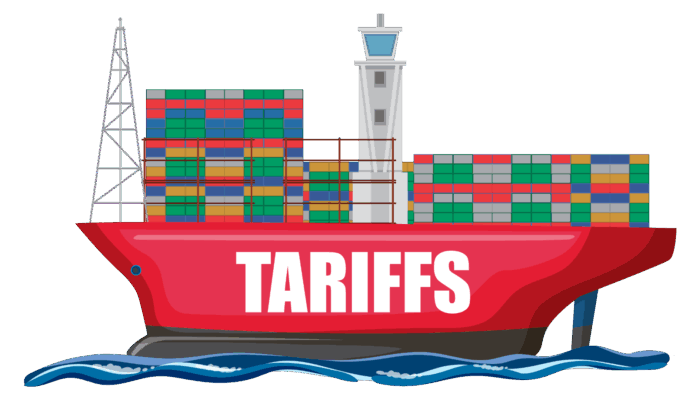“How can money be the root of all evil when shopping is the cure for all sadness?”
– Elizabeth Taylor
If there’s one thing everyone in the fashion industry can agree on, fashion has never been a necessity. Consumers don’t purchase Chanel jackets, Armani jeans, Hermés bags, David Yurman bracelets, or any other fashion item because they need them. They purchase them because the entire experience makes them happy—from thinking about what they want to buy, to shopping, purchasing, owning, and wearing the items—every step is thrilling and pleasurable. Today, social media has enabled sharing, adding yet another level of enjoyment to the experience.
Start with the Products
As a former editor at Women’s Wear Daily (WWD), and a fashion educator, it’s always been clear the roadmap to success in fashion retailing starts with marketing desirable products as part of a complete branded lifestyle experience. Following those directions, Ralph Lifshitz launched a necktie collection in 1967 and built an empire that transformed him into fashion icon Ralph Lauren. His collections, which encapsulate his vision of America from the rustic cowboys of the west to the preppy college students of the east, is on display in major department stores as well as namesake boutiques globally. Advertising and marketing campaigns reinforce the lifestyle his brand represents – and customers worldwide accept and embrace it as true American style. Year after year, by continually delivering what consumers want, Ralph Lauren Polo established itself as one of the most valuable, recognized brands in the world.
From Resistance to Rise of Technology in Fashion Retail
The launch of the internet and the subsequent birth of eCommerce caused little disruption on retail’s roadmap. Most fashion brands resisted embracing the web as a significant sales channel for multiple reasons ranging from cost and fear to the inability to re-create an in-store shopping experience online. While many launched eCommerce websites, they operated as a side channel of revenue. The true disruptor for fashion brands was the smartphone—with mobility came undeniable shifts in consumer behavior that forever changed retail. Fashion brands could no longer afford to dismiss the power of eCommerce and within a few years, “digital transformation” became the industry’s buzzword.
Even so, leadership at Ralph Lauren didn’t initiate digital transformation until early 2016 after seeing declining sales in 2015. It took them 2 years to find the right technology solution and 2018 had transitioned their eCommerce platform to the cloud. Today, they run on a fully agile, digital platform. According to David Lauren, Chief Innovation Officer at Ralph Lauren, every product is now ‘born-digital’. By digitizing every product during manufacture, the company is not only able to track and manage inventory better, it is also able them to make smarter production decisions as well as use customer data to personalize and improve experiences.
How COVID has Disrupted Fashion Retail
The COVID crisis has created yet another disruption in fashion retailing. In the U.S., state mandates requiring the closing of “non-essential” businesses such as fashion retailers have left brands lacking robust eCommerce capabilities with huge inventory surpluses and dwindling customer loyalty. In a recent article, Ken Fleming, president of Logistyx, a cloud-based shipping management system, points out retailers with strong, flexible eCommerce platforms have been quickly able to expand their online product offerings and add features like curbside pickup and delivery. As a result, they’re thriving in the current environment. In a recent article, he predicted that “as Covid-19 outbreak restrictions ease, forward-thinking retailers will learn from these examples and embrace digitization, moving to an omnichannel model that includes e-commerce channels. Growing customer expectations, rising competition in the marketplace, and the increased prevalence of supply chain disruptions leave them no other choice.”
How Modern eCommerce Technology Can Help
The good news is, modern technology is providing solutions brands can implement quickly to enable features that deliver the types of “experiences” traditional eCommerce platforms are unable to support. Global fashion brands ranging from JD Sports and Thomas Pink, to Carhartt, Burberry, Zara, and, of course, Ralph Lauren, have all capitalized on the benefits of transitioning their eCommerce to MACH technology-based platforms.
By integrating Microservices, APIs, Cloud, and Headless technologies onto a single platform, MACH systems are able to meet the needs of retailers today. Mehdi Fassaie, Founder and CTO of Fluent Commerce, a cloud-native distributed order management platform, explains, “First and foremost, headless architecture gives brands the flexibility to provide seamless experiences while also allowing them to respond quickly to changing consumer expectations and marketplace shifts.” He says the cloud-native aspect is also key to delivering a superior experience. “The scalability the cloud offers means brands don’t have worry or pre-plan for sales events and don’t have to wait on IT to ensure the platform can support new services – and brands no longer have to fear server downtime disrupting the consumer experience.:
Kelly Goetsch, Chief Product Officer at commercetools, and a founding member of the MACH Alliance offers yet another selling point,“MACH solutions are designed to be “future-proof”.” He explains the open, composable architecture of MACH systems allows brands to quickly and seamlessly integrate and implement advanced inventory management, automated eMail marketing, and CMS platforms as well as consumer-facing features. “Brands choose and customize the features they want based on exact needs and can add them at anytime.” he says, “Whether they want to offer product recommendations, apparel sizing tools, virtual try-ons, or virtual sales associates or add curbside pick-up or click-and-collect options, making changes and updates is a seamless, easy process.”
Why Fashion Retailers Should Embrace MACH Technology
Fashion brands have always relied on inspiring their customers to buy by presenting “new” products and designs that they cannot possibly live without. Now, that same consumer has embraced technology, and is finding pleasure in the immediacy it delivers. In the long-run, brands that digitally transform today will hold the power to satisfy the next generation of shopaholics. Goetsch believes the benefits MACH technology offers make it a perfect fit for fashion retailers. “It’s the only solution that enables retailers to deliver the digital branded lifestyle experiences consumers demand today and give them the confidence that no matter what happens in the future, their technology can handle it.”
MACH enables fashion brands to continually deliver experiences that exceed customer expectations.
M = Microservices
Loosely coupling services in an application enables each feature to run on its own release cycle to speed up iterations
A = APIs
Pluggable, scalable, and replaceable, APIs simplify programming and accelerate speed to market
C = Cloud
Provides on-demand availability and instant scalability to support A/B testing, while offering high security and faster content delivery.
H = Headless
Decoupling the front-end eCommerce platform from the backend allows each side to iterate independently while ensuring no disruption in the UX.




